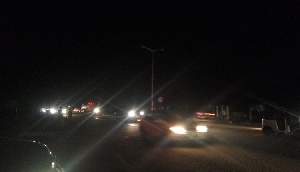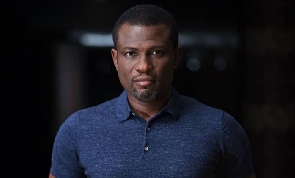The worst power crisis in many years has befallen the Upper East region with extremely distraught residents clamouring for all the heads responsible for their grief to roll.
For the past two weeks, the entire region has spent most of its nights in darkness and hardly has a day passed since the beginning of October without electricity behaving like a seesaw— disappearing for several hours and reappearing only for a short while before it flickers and goes out again.
“It’s a horrible disaster for us,” a high-level source at the Upper East Regional Hospital told Starr News when the region was plunged into darkness again Thursday night.
“In the last two weeks alone, we have bought fuel to the tune of Gh¢12,000 to power the generator so that lights can be on for service to continue. Already, we are not getting regular payments for services we deliver with the health insurance and this additional cost as a hospital is having a toll on us. It’s terrible for us,” he lamented.
He added: “And the power outages come unannounced. The lights were off throughout last night. They came this afternoon and went off again. The man just called me shortly before your call came that we need to buy another two drums of diesel into the generator and a drum is about Gh¢1,100. So, we have to incur another Gh¢2,200 to buy diesel to be sure that even if the light doesn’t come on this night, we have power till tomorrow morning. It’s serious.”
As the teasing lights continue to compel families to go round day and night with their clothes to wherever there is electricity to iron them, business is looking very good at shops where dry cells, rechargeable lamps and power banks are being sold to a desperate region in power crisis.
And for the lawbreakers who need just the cover of darkness to unleash attacks on the public, the consistent blackouts are more like unlocking a banana barn for a troop of monkeys to feast on.
A reason shops now close as rapidly as they can whenever the lights go out at nightfall.
Thieves actually took advantage of the crisis last Wednesday (48 hours ago) by robbing Talata Enterprise, a well-patronized shop opposite a Total filling station at Soe, an eastern suburb of the regional capital.
The bandits cut through the roof of the store nocturnally and made away with “a lot of money, a mobile phone and some items” in what was the first ever raid on the shop.
From salons to business centers, from public workplaces to civil society offices, the recurrent power failures are robbing the region’s workforce of their job (their joy) by day and of their sleep by night.
Some households, especially those with newborns, now spread their mattresses and mats outside at night— running away from heat into the arms of harmful reptiles and quick-tempered insects evicted from their holes by the same heat.
Power Crisis triggers Water Shortage
Several parts of the region are in a big twin trouble with the Ghana Water Company Limited (GWCL) unable to supply water to them as a result of the blackouts.
A widespread search for water in the affected communities has attained a disturbing height where unusual sights of trucks moving from house to house to deliver water have become common for the past fourteen days.
Those who cannot pay to have water driven to their doorsteps are joining kilometres-long queues of yellow jerrycans at faraway fresh-water sources, hiring lucky commercial motor-tricycle operators to carry the filled containers back home.
“I heard machines are not pumping water again because of the electricity problem. Our area like this has not seen water for about two weeks. These days, I travel to SSNIT Affordable Houses to take my bath. Initially, I was taking my bath from a bottle. This morning, I couldn’t go to SSNIT; so, I just used one pure sachet to wash my head and my face without soap."
“It’s just so annoying when you look at the crisis being caused these days. The heat is taking away the water in your body and they are not pumping water, too, to replace the water your body is losing to the heat. What is this? NEDCo and GRIDCo must not go unpunished,” Charles Anafo, a frustrated teacher resident at Atulbabisi, told Starr News.
The Northern Electricity Distribution Company (NEDCo) and the Ghana Grid Company (GRIDCo) have come under mounting pressure from the region’s fifteen radio channels to explain what is happening at their ends to the highly incensed public.
But so far, NEDCo is the only one doing the talking through its public relations unit and, at times, through the management itself.
“GRIDCo is supposed to transport the power to us; we only distribute the power as NEDCo. So, if the systems of GRIDCo fail, definitely we cannot get power to distribute. But because we are in direct contact with customers, ‘Oh, NEDCo has taken off power’. No.
“What I want the public to understand is that if customers don’t consume the power, NEDCo cannot collect the bills. So, it is in the interest of NEDCo to ensure that power is available at all times. Some of the challenges we have experienced within these two weeks are from GRIDCo. And a few of them, too, are from NEDCo,” the acting Area Manager of NEDCo for the region, Abubakari Musah Gbanzaba, told Starr News Friday.
Continuing, he said: “Yesterday in the night, for instance, the power went out. It was a total blackout. The whole of Tamale was off, up to Techiman. That was a GRIDCo fault. The previous day, the power went off. It was a GRIDCo fault. About four of these outages within these two weeks, which are severe, were from the GRIDCo end.”
Whilst the nature of the faults at GRIDCo is still unknown to the media and the public, NEDCo says the power outages which have come so far from its own end within the past two weeks are as a result of a faulty feeder.
“A group of transformers usually take their power from one source called a feeder. We have feeder one, we have feeder two, feeder three, feeder four. That’s the way I can explain it for you to understand— plenty of transformers taking their power from one particular source called a feeder. So, feeder one was down last week. So, the load on feeder one was taken onto the load on feeder four.
“The load was too much for feeder four. Our technical men came from Tamale and expanded the capacity of feeder four to take additional load. Currently, one feeder is doing the distribution job of two feeders. This morning, we procured logistics to take off power to put feeder one on its feet and free feeder four. These are the two factors that made us for the past two weeks to have challenges. Majority of the challenges came from GRIDCo end. The challenge that came from our end is the breakdown of feeder one,” Mr. Musah explained.
Even after NEDCo may have repaired the faulty feeder one, the crisis cannot be said to be over if GRIDCo still cannot grab hold of the crisis at its own end and deal decisively with it. This is because the power NEDCo distributes is taken from GRIDCo.
Another Power Failure Strikes on Friday
When Starr News visited the GRIDCo Substation in Bolgatanga Friday afternoon, there was nobody to speak to the issue among the officials around.
Another power failure had hit the entire northern sector of the country as of the time of filing this report Friday evening. GRIDCo sources said the latest blackout was a GRIDCo fault and that it was hard to explain the cause.
In the wake of the recent power cut, some frustrated residents moved out of their rooms to catch some air outside and to plan how to cope with another night without light if the power was not restored Friday.
Some, who were seeking solace at some pubs, disappointingly were welcomed on arrival with drinks either not chilled enough to ease their GRIDCo-NEDCo burden or too warm to let the waitress or waiter go without their share of the blame.
And some, spotted with their chins firmly rested in their palms, were thinking about how the endless-looking outages had affected them in a lot of ways.
When power is finally restored, to swing on and off no more, those in charge of the region’s power depots— GRIDCo and NEDCo— may have to work on the psyche of the much-tormented public…to restore the lost trust.
Regional News of Saturday, 20 October 2018
Source: starrfmonline.com

















